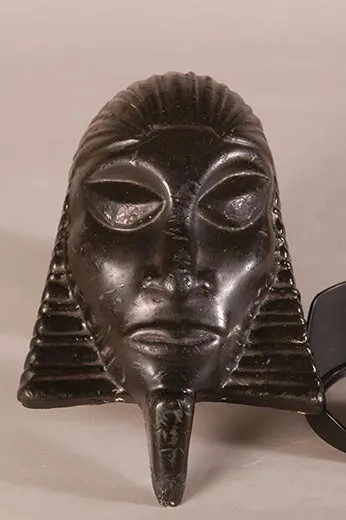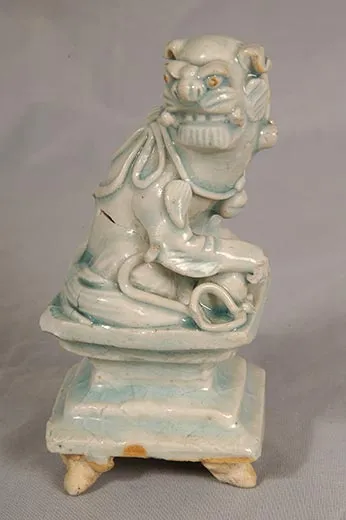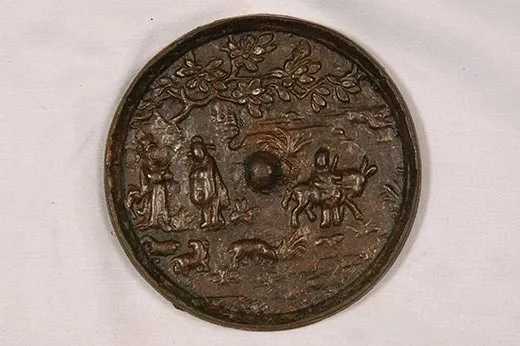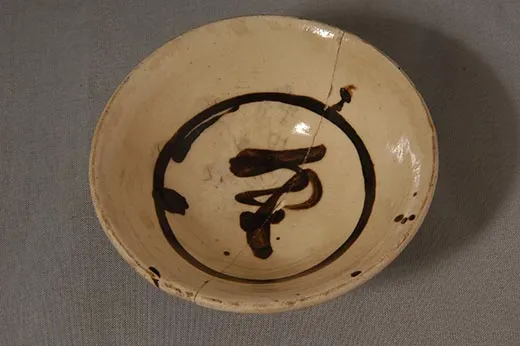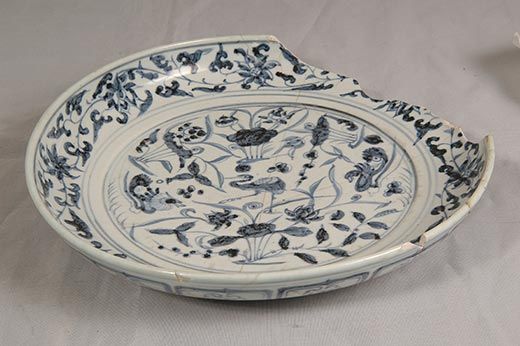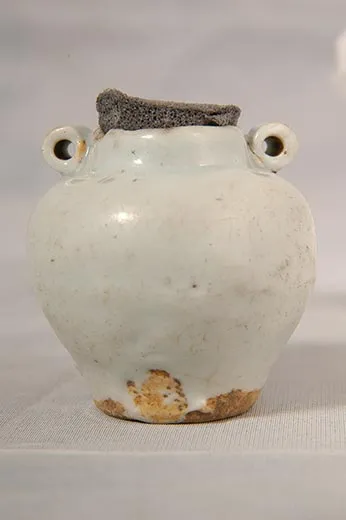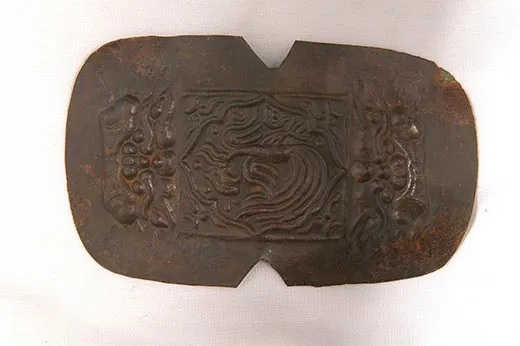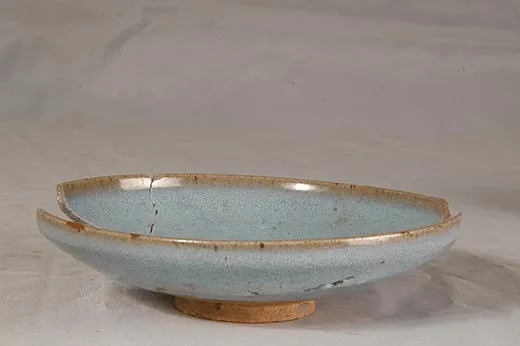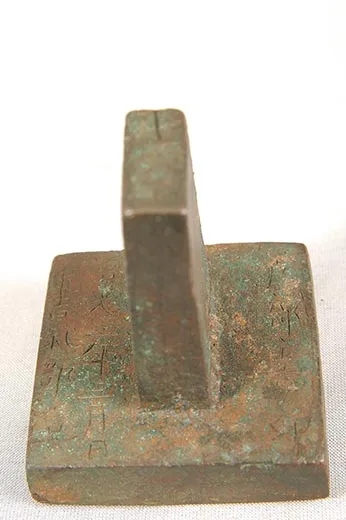Genghis Khan’s Treasures
Beneath the ruins of Genghis Khan’s capital city in Central Asia, archaeologists discovered artifacts from cultures near and far
/https://tf-cmsv2-smithsonianmag-media.s3.amazonaws.com/filer/14-century-gold-alloy-bracelet-631.jpg)
Of all the wonders in The Palace of the Great Khan, the silver fountain most captivated the visiting monk. It took the shape of “a great silver tree, and at its roots are four lions of silver, each with a conduit through it, and all belching forth white milk of mares,” wrote William of Rubruck, a Franciscan friar who toured the Mongol capital, Khara Khorum, in 1254. When a silver angel at the top of the tree trumpeted, still more beverages spouted out of the pipes: wine, clarified mare’s milk, a honey drink, rice mead – take your pick.
The Khans had come a long way in just a few decades. Like the rest of his fierce horsemen, Genghis Khan – whose cavalry pounded across the steppe to conquer much of Central Asia – was born a nomad. When Genghis took power in 1206, Mongolian tribes lived in tents, which they moved while migrating across the grasslands with their livestock. As the empire continued to expand, though, the Khans realized the need for a permanent administrative center. “They had to stop rampaging and start ruling,” says Morris Rossabi, who teaches Asian history at Columbia University. So in 1235, Genghis’s son, Ogodei, began building a city near the Orkhon River, on the wide-open plains.
“It was as if you put Venice in Kansas,” says Don Lessem, producer of a new Genghis Khan exhibit touring the country now.
The ruins now lie beneath sand and scrubby vegetation, but lately there’s been renewed interest in Khara Khorum. A book of new scholarship, “Genghis Khan and the Mongol Empire,” coming out in June details major finds that archeologists have made in recent years, which shed light on what life was like in the city as the Mongols transitioned from raiders to rulers. The traveling exhibit, at the Houston Museum of Natural Science in Texas through September 7, 2009, and then at the Denver Museum of Nature & Science for three months starting October 10, 2009, will showcase some of those artifacts for the first time on American soil.
Now archaeologists who’ve worked on the site believe that they might have located The Palace of the Great Khan, home of the fabled silver fountain.
The name Khara Khorum means “black tent,” Rossabi says. Surrounded by tall mud walls, The Mongol capital rose up out of the blank plains.
“It wasn’t Cairo, but people compared it to European cities,” says William W. Fitzhugh, an archaeologist at the National Museum of Natural History and a co-editor of the new book.
People of many nationalities walked its warrens of narrow streets: Chinese, Muslims, even a lone Frenchman -- Guillaume Boucher, the goldsmith who designed the fountain. Many of these foreigners lived in Khara Khorum involuntarily, conscripts from conquered cities. The city layout reflected their diversity: there were mosques, “idol temples” and even a Nestorian Christian church. Archaeologists have found Chinese-style tiles and turret decorations that probably adorned the roofs of buildings.
Khara Khorum was also a trade center and goods from far and wide have been recovered there: silver Muslim coins, pieces of Chinese pottery. The Texas show includes an obsidian mask that likely traveled to Khara Khorum all the way from Egypt, Lessem says.
The Mongols didn’t have strong artistic tradition of their own but loved beautiful objects and often spared vanquished craftsmen in order to put them to work. Archaeologists have unearthed evidence of glass-working and bone-carving workshops. “We found relics of the craftsmen’s quarters and firing places and iron and metal artifacts,” says Ernst Pohl, a German archaeologist who spent years excavating the site. His team discovered a gold bracelet decorated with a phoenix flanked by demons that had apparently been made in the city.
Just as they were inspired by the cities that they conquered, the Mongols were influenced by the Chinese and Arab civilizations that they absorbed.
“Nomads are not dogmatic,” says Bill Honeychurch, a Yale University archaeologist. “They had the idea that you can learn from people you’ve brought into the fold.” From these pieces the Mongols forged a culture of their own. “They didn’t just adopt, they synthesized and acquired, and the end result was something unique and different.”
As it turned out, Khara Khorum was a less than ideal site for a city. “There wasn’t sufficient food or resources,” Rossabi says. Five hundred carts of supplies were brought in each day to feed a population that grew along with the empire, which by the mid-thirteenth century would stretch from Hungary to the shores of the Pacific. Genghis’s grandson, Kublai Khan, eventually moved the capital city to Beijing and built a summer palace at Shangdu -- the “stately pleasure dome” of Samuel Coleridge’s “Kubla Khan” poem.
“You can’t rule a population of 75 million from Mongolia,” Rossabi says. “Kublai was trying to ingratiate himself with the Chinese, playing down the foreignness of his dynasty to win over his subjects.”
Khara Khorum began to fade, although the Khans periodically returned to the city on the steppe. After the Mongols were expelled from China in the fourteenth century, they briefly made the city their center again; in 1388 the Chinese obliterated it. The site remained important to various Mongol clans and in 1586 Abtaj Khan built a large Buddhist monastery there.
The Palace of the Great Khan, archaeologists now think, lies beneath the remains of this complex, much of which was destroyed by Mongolia’s Communist leadership in the 1930s. Its silver fountain may never be recovered, but to historians the real fascination of the Mongols’ city is that it existed at all.
“It is kind of amazing that they conceived of, or accepted, the idea of setting up a permanent structure,” Rossabi says. If the Khans hadn’t “moved toward having an administrative capital, the empire wouldn’t have succeeded so readily.”
